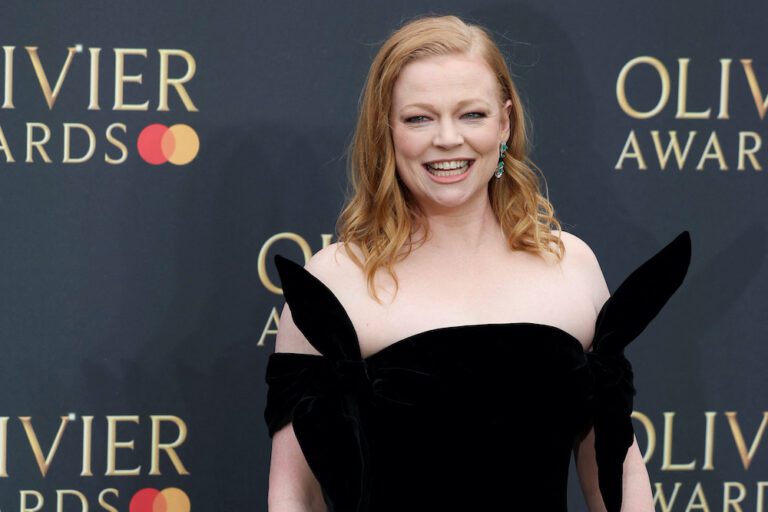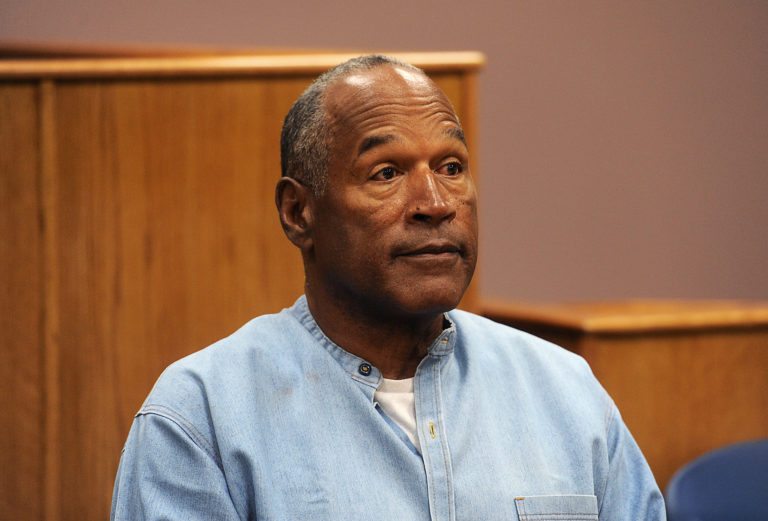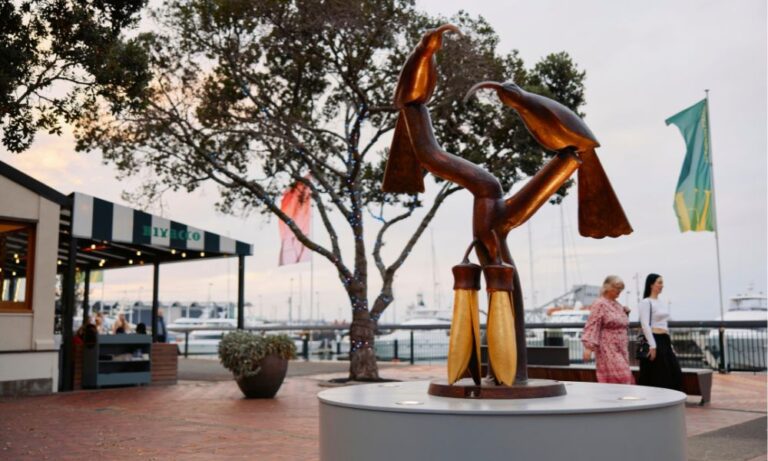1950s
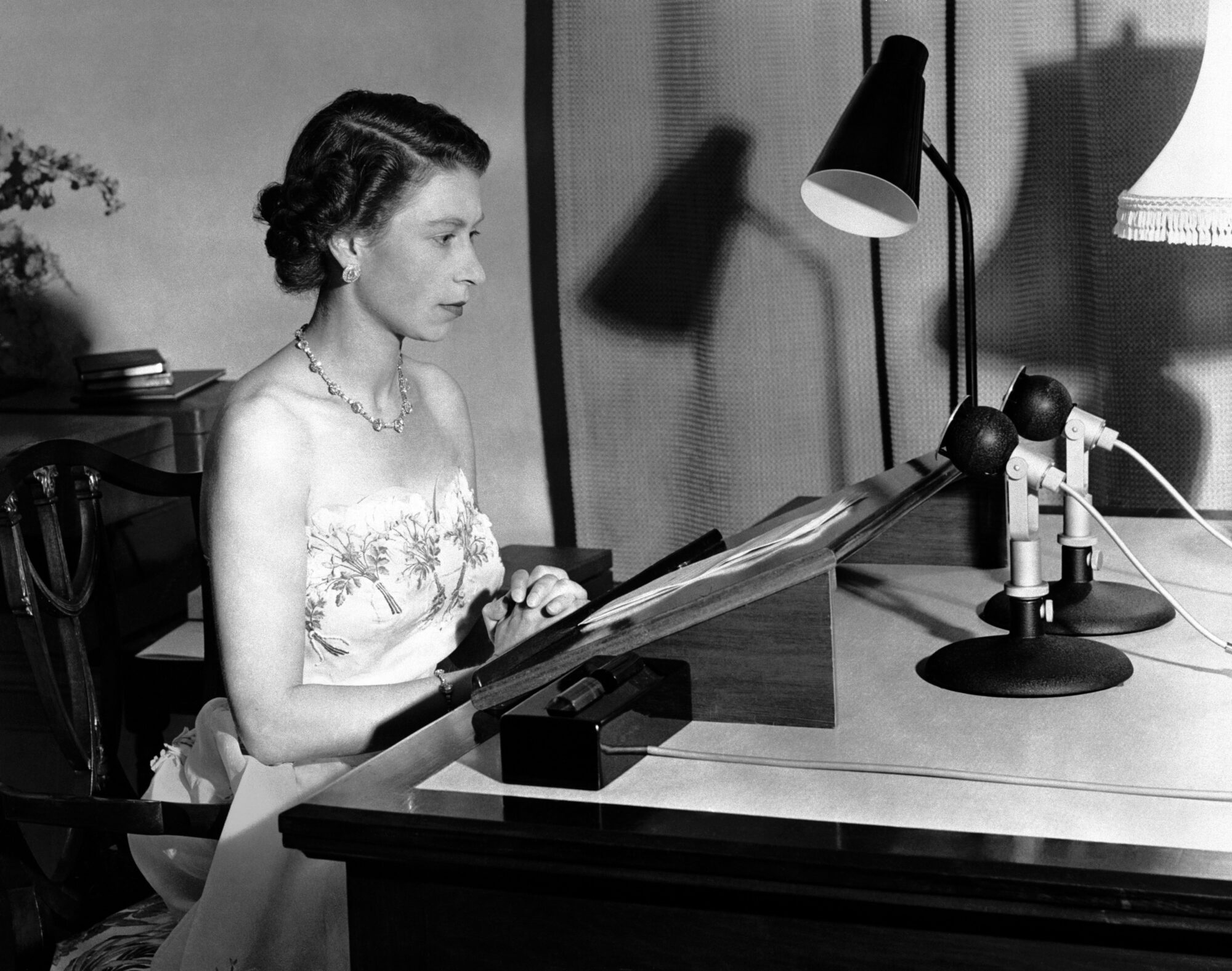
It was in 1953 that a 27-year-old Queen Elizabeth II found herself celebrating a Christmas in New Zealand, broadcasting her annual Christmas message from Government House inAuckland. It marked the beginning of the Queen’s and Prince Philip, the Duke of Edinburgh’s Commonwealth tour, which saw them visit 13 countries including New Zealand, Australia, Tonga and Fiji.
“This will be a voyage right round the world – the first that a Queen of England has been privileged to make as Queen. But what is really important to me is that I set out on this journey in order to see as much as possible of the people and countries of the Commonwealth and Empire, to learn at first-hand something of their triumphs and difficulties and something of their hopes and fears,” she said in her address. The Queen observed that she was deeply impressed by “the achievement and the opportunity which the modern Commonwealth presents”.
“Like New Zealand, from whose NorthIsland I am speaking, every one of its nations can be justly proud of what it has built for itself on its own soil. But their greatest achievement, I suggest, is the Commonwealth itself, and that owes much to all of them.”She said that the Commonwealth bears no resemblance to the empires of the past. “It is an entirely new conception, built on the highest qualities of the spirit of man: friendship, loyalty and the desire for freedom and peace.“To that new conception of an equal partnership of nations and races I shall give myself heart and soul every day of my life.”
In 1954, less than two years after ascending the throne, Queen Elizabeth II and Prince Philip took a tour of New Zealand, part of the monarch’s 1953/1954 Commonwealth Tour.
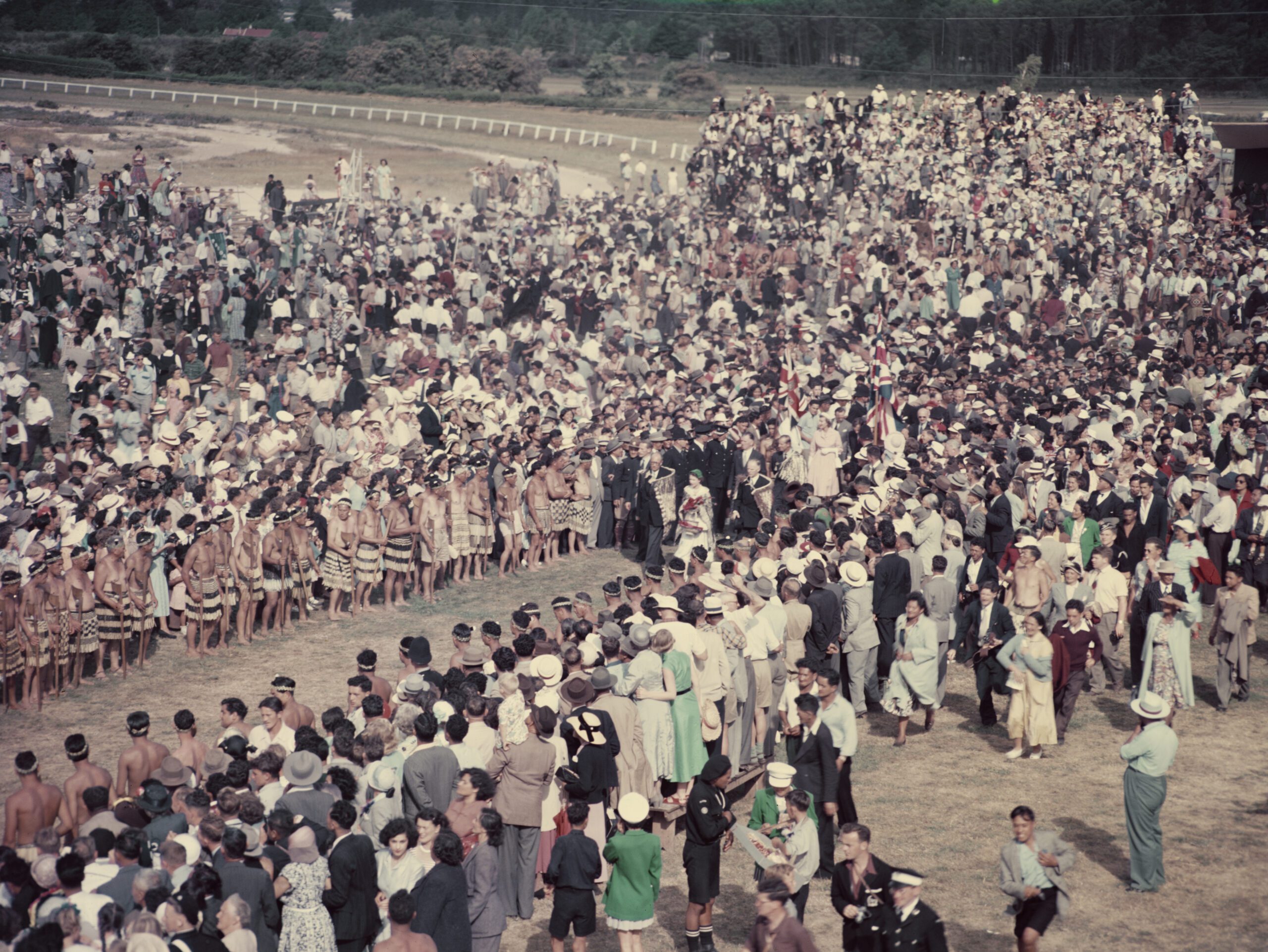
In this photo, The Queen and Prince Philip can be seen walking through a large crowd at Arawa Park in Rotorua in January 1954.
A decade after her first royal visit, the Queen returned to New Zealand to mark the 123rd anniversary of the signing of the Treaty of Waitangi – signed in 1840 by Captain William Hobson RN as consul for the British Crown and Māori chiefs (rangatira) from the North Island of New Zealand. The Queen, accompanied by Prince Philip, the Duke of Edinburgh, began the tour in the Bay of Islands, where they attended Waitangi celebrations. Pictured here, the monarch waves to crowds in an open-top car in Russell.
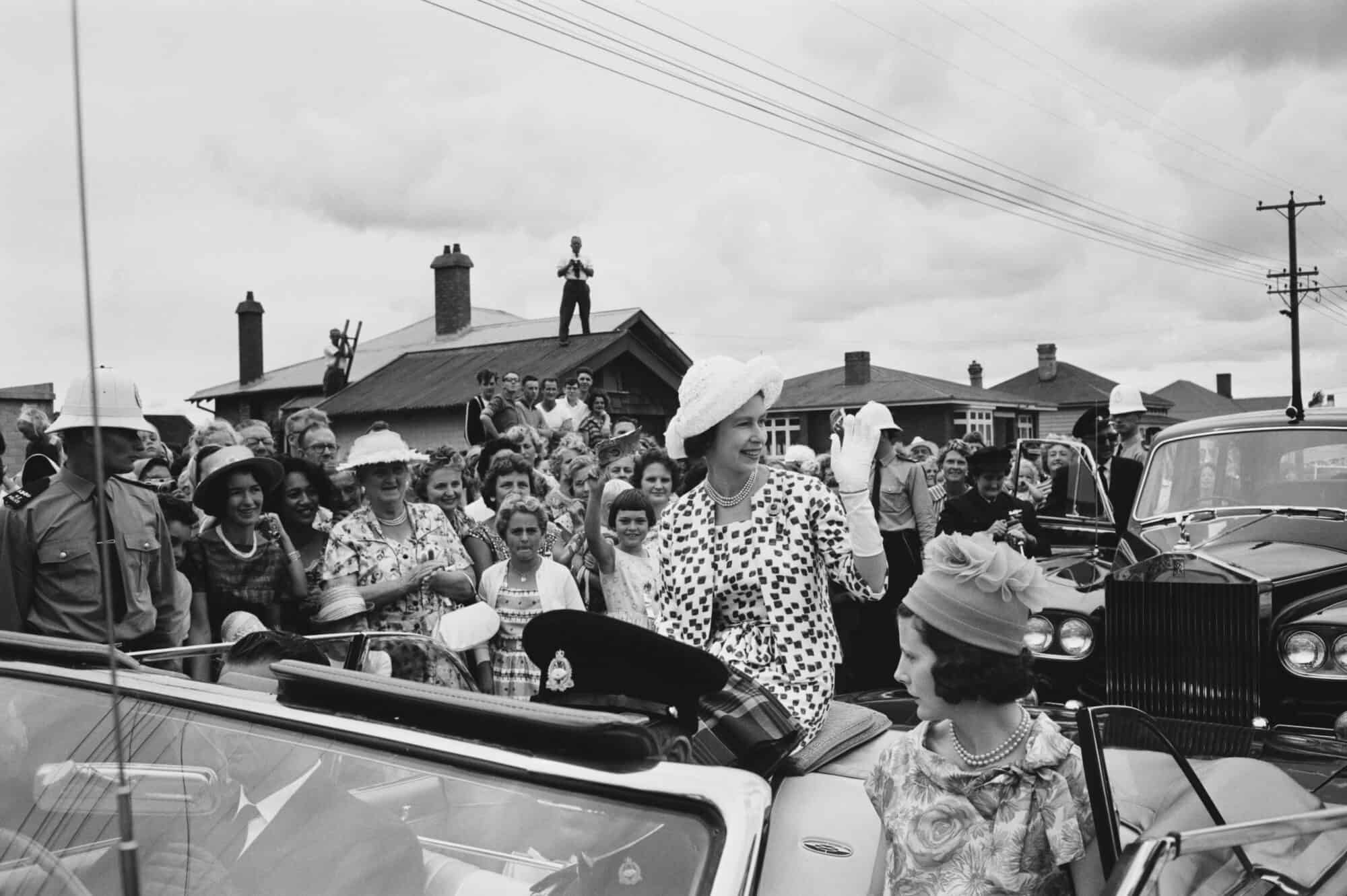
During the Waitangi celebrations, which drew crowds of 20,000, the Queen heard from Sir Turi Carroll, the first president of the New Zealand Māori Council, who called for recognition of the Treaty in law and the establishment of a Waitangi Day public holiday (the first Waitangi Day public holiday wasn’t until 1974). It was the Queen’s use of te reo Māori which drew applause during her speech, greeting the crowd with “tēnā koutou katoa” and ending with: “Whatever happened in the past, and whatever the future may bring, it remains the sacred duty of the crown today, as in 1840, to stand by the spirit of the Treaty of Waitangi and to ensure that the trust of the Māori people is never betrayed,” she said. “After the Treaty had been signed and witnessed on that historic February day, Captain Hobson spoke these challenging and prophetic words: he iwi kōtahi tātou, we are all one people. “On this happy anniversary, let me add simply, arohanui kia ora koutou.”
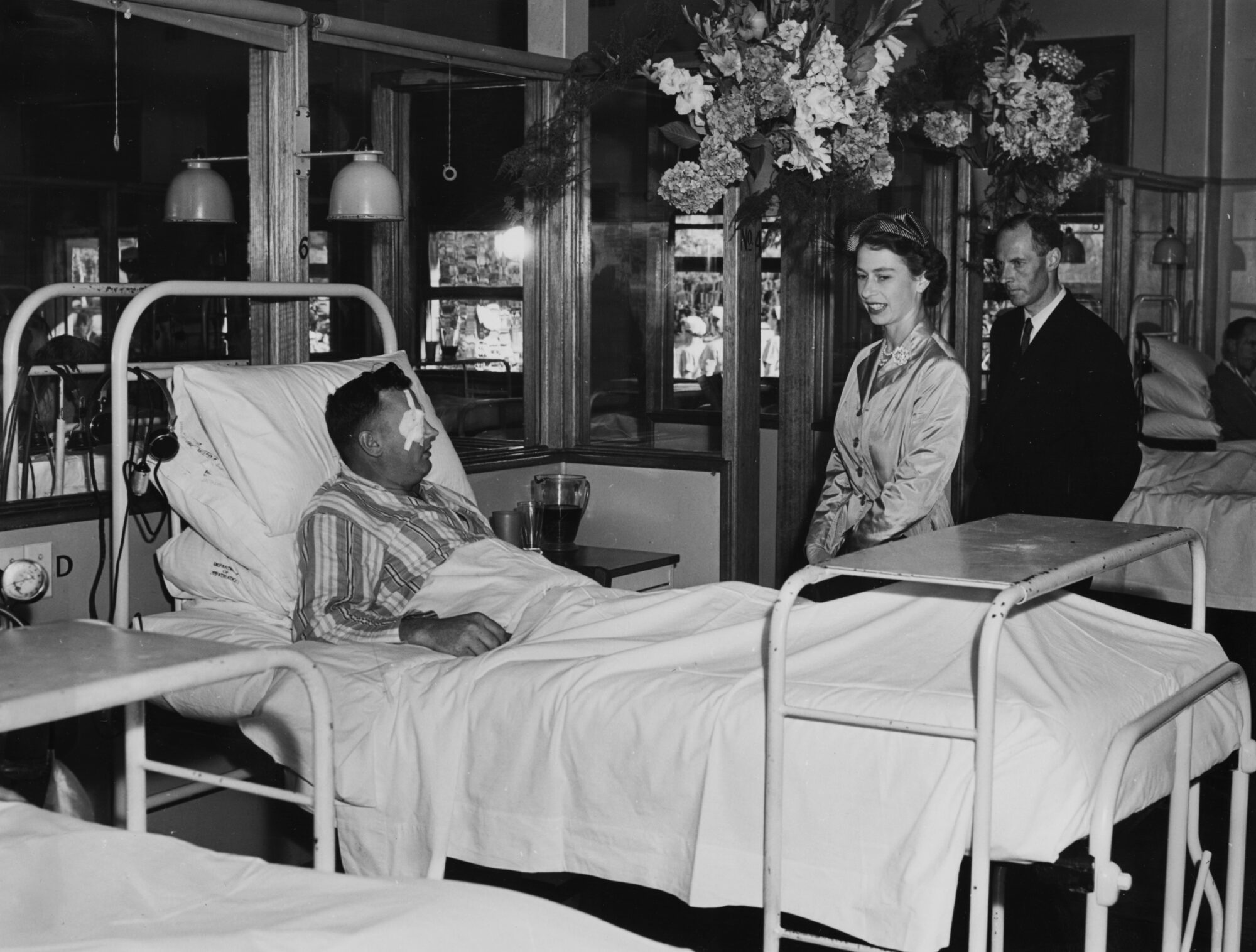
In 1954, Queen Elizabeth II sailed into Sydney Harbour, where she was greeted by an estimated one million Sydneysiders. At just 27 years old, she had assumed the role of Head of the Commonwealth two years earlier from her late father King George VI, the first monarch to hold the title. The first, and to date, only reigning British monarch to visit Australia, the inaugural Commonwealth tour for the Queen and Prince Philip, the Duke of Edinburgh saw them visit 14 countries including New Zealand, Australia, Tonga and Fiji. The royal tour of 1954 was the single biggest event ever planned in Australia, with the royals visiting 57 towns in 58 days.
She visited every state and territory, except the Northern Territory. Almost three-quarters of the Australian population is said to have taken the opportunity to see the Queen during the tour and she remarked, “What has impressed me the most was the long distances people travelled to see me”.
In the Repatriation General Hospital in Hobart talking to an injured ex-serviceman, Queen Elizabeth II visited a huge range of people and places throughout the country, with events scheduled for the morning, afternoon and evening. After the vastness of the 1954 tour by the Queen and the Duke of Edinburgh, Prime Minister Robert Menzies proposed that future royal visits should be “less formal”. He feared that if the 1954 tour were used as a standard, “it might be difficult to have such visits very frequently” due to the work and effort involved for the organisers and participants.
1960s
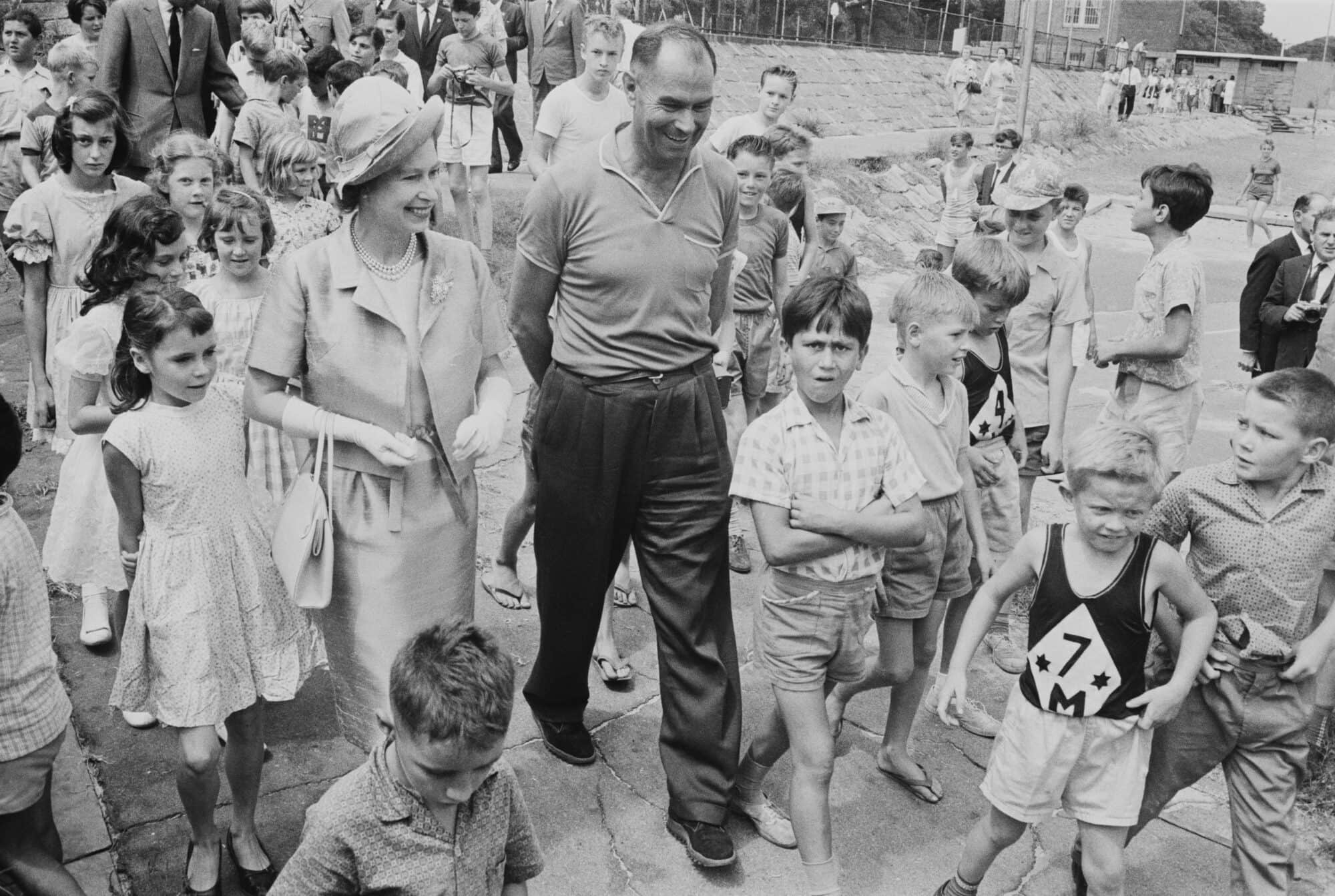
Having made a formal tour of Australia in 1954, the Queen and Prince Philip, the Duke of Edinburgh returned to Australia in 1963, touring all the states and territories. The main purpose of this royal tour was to lead the Canberra Jubilee celebrations commemorating the 50th anniversary of the naming of the capital. As well as Canberra, the Queen and Prince Philip were greeted in Sydney, Darwin, Perth, Adelaide, Brisbane and the Gold Coast. Here, the Queen is pictured surrounded by schoolchildren at a playground in Sydney. On this tour, the royals also visited the Royal Flying Doctor Service of Australia base in Alice Springs.
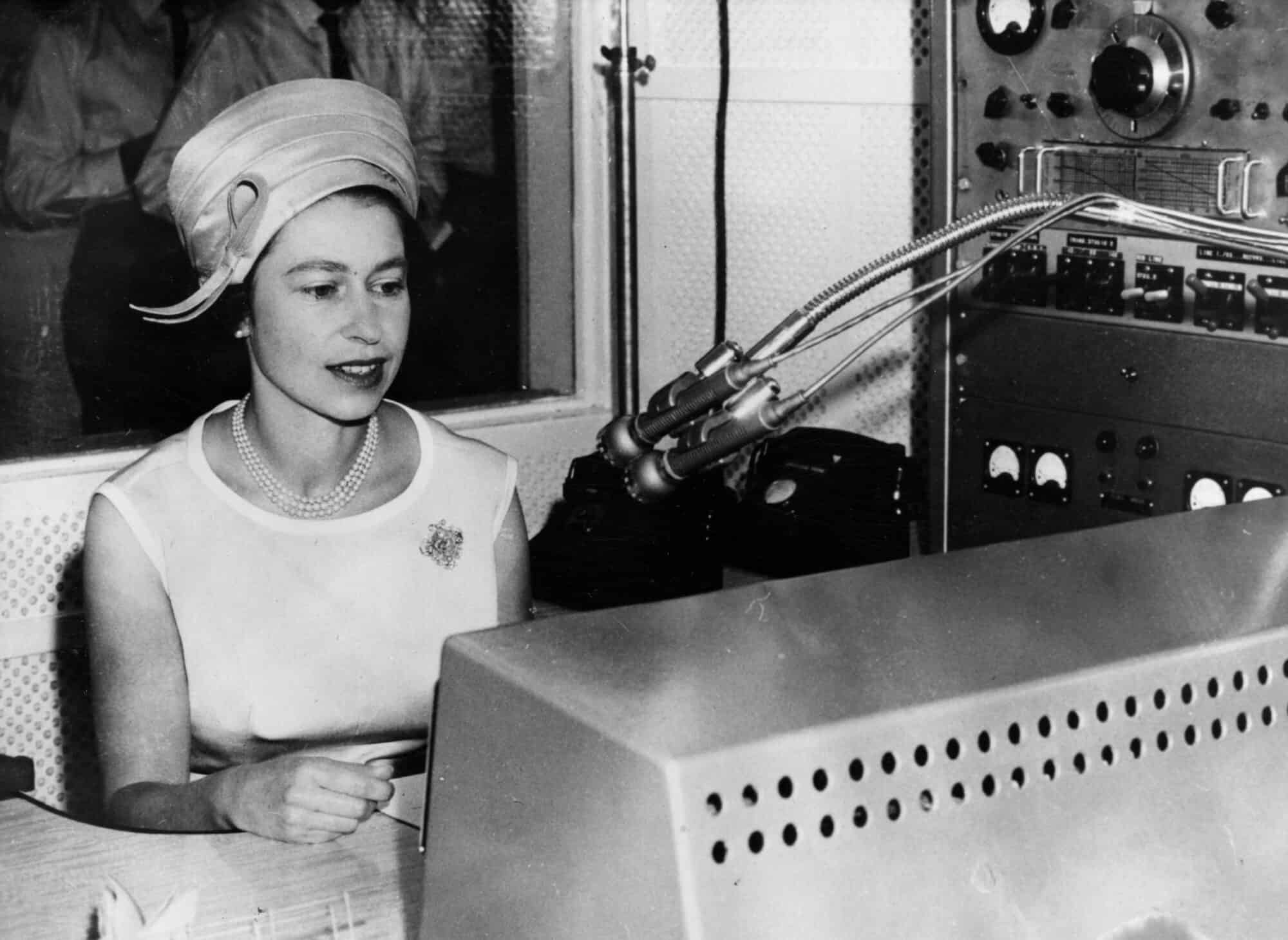
In preparation for this tour, Sir Roy Dowling, the Queen’s Australian Secretary for the visit, was cautioned about Northern Territory mosquitoes. Dowling was warned, “You could be placed in an extremely embarrassing situation if the Queen’s skin was marked and if the press published pictures and stories about those marks.” In a statement by Prime Minister Robert Menzies, the itinerary for the royal visit was based on the maximum use of the royal yacht Britannia , which the Queen used as her home wherever possible and as a means of transport and of rest. “The use of the Royal Yacht will also allow Her Majesty to enter the cities of Melbourne, Hobart, Sydney, Brisbane and Fremantle from the seaward. Furthermore, it is Her Majesty’s intention to use the yacht for entertainment purposes throughout the visit,” he said.
1970s
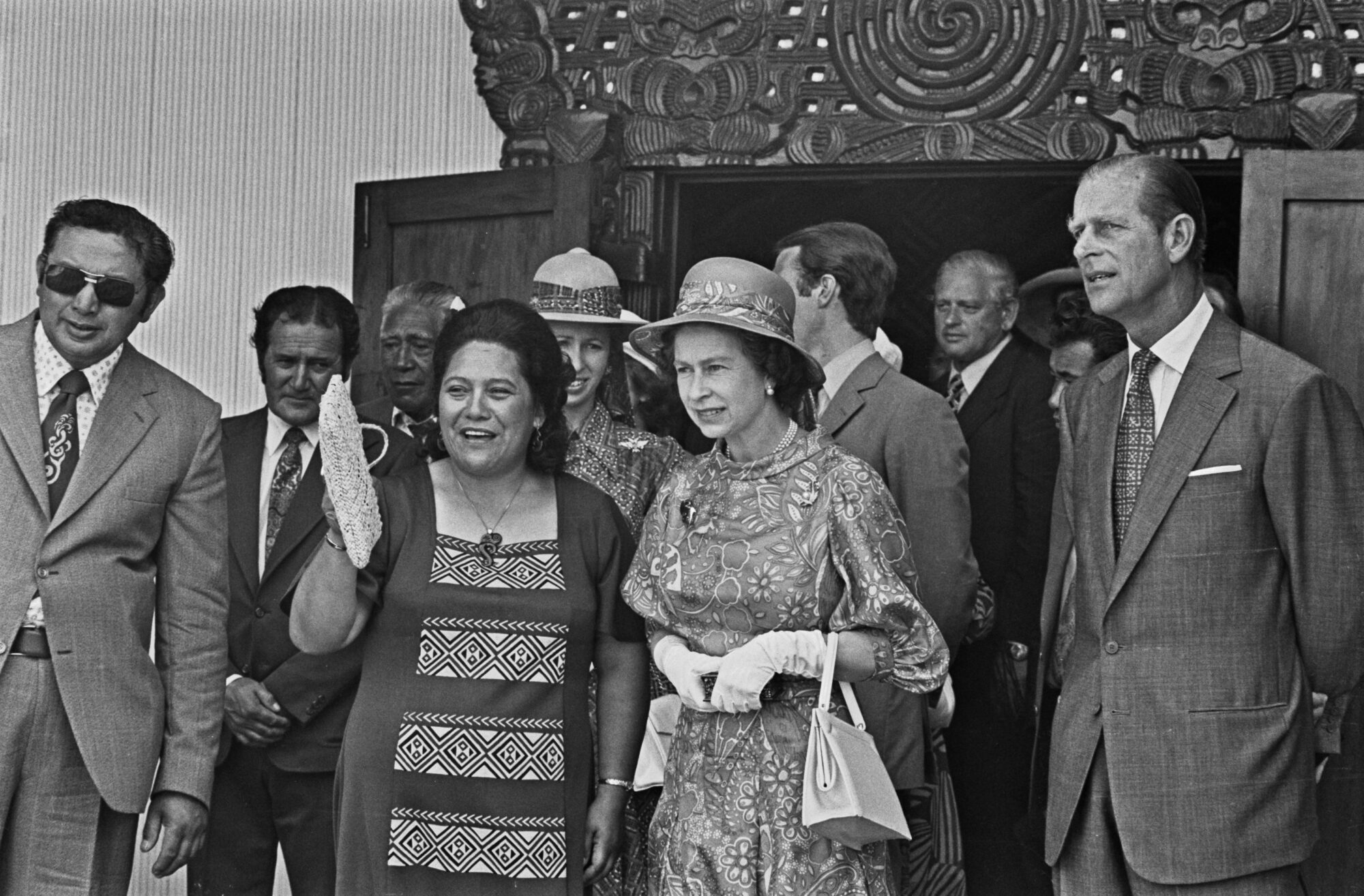
In February 1974, joined by her husband, Prince Philip, the Duke of Edinburgh and their daughter, Princess Anne, Queen Elizabeth II was welcomed to the Tūrangawaewae marae in Ngāruawāhia by Te Arikinui, Dame Te Atairangikaahu, the Māori queen. Queen Elizabeth II spent two weeks in New Zealand during her 1974 visit, where she also attended the Commonwealth Games in Christchurch, which was the second time that the country had hosted the Commonwealth Games. During the visit to Tūrangawaewae, the Queen opened the Kimiora Hall cultural centre at the marae, one of Te Atairangikaahu’s first developments as the Māori queen.
It was not the first time the British monarch and the Māori queen had met. In 1953, during the royal’s first New Zealand visit, Te Atairangikaahu, known then as Princess Piki, invited the Queen and the Duke of Edinburgh to come inside the Tūrangawaewae marae and into the Māhinārangi meeting house, reportedly to the cheers on the crowd. Te Atairangikaahu would go on to become the longest-reigning Māori monarch, serving for 40 years and enjoying a national profile. When Te Atairangikaahu died in 2006 at the age of 75, the Queen sent a message of condolence to her whānau and the Tainui people. “I remember warmly my own visit to Tūrangawaewae and my meetings with Dame Te Ata. Her leadership, dignity and compassion will long be remembered,” she said.
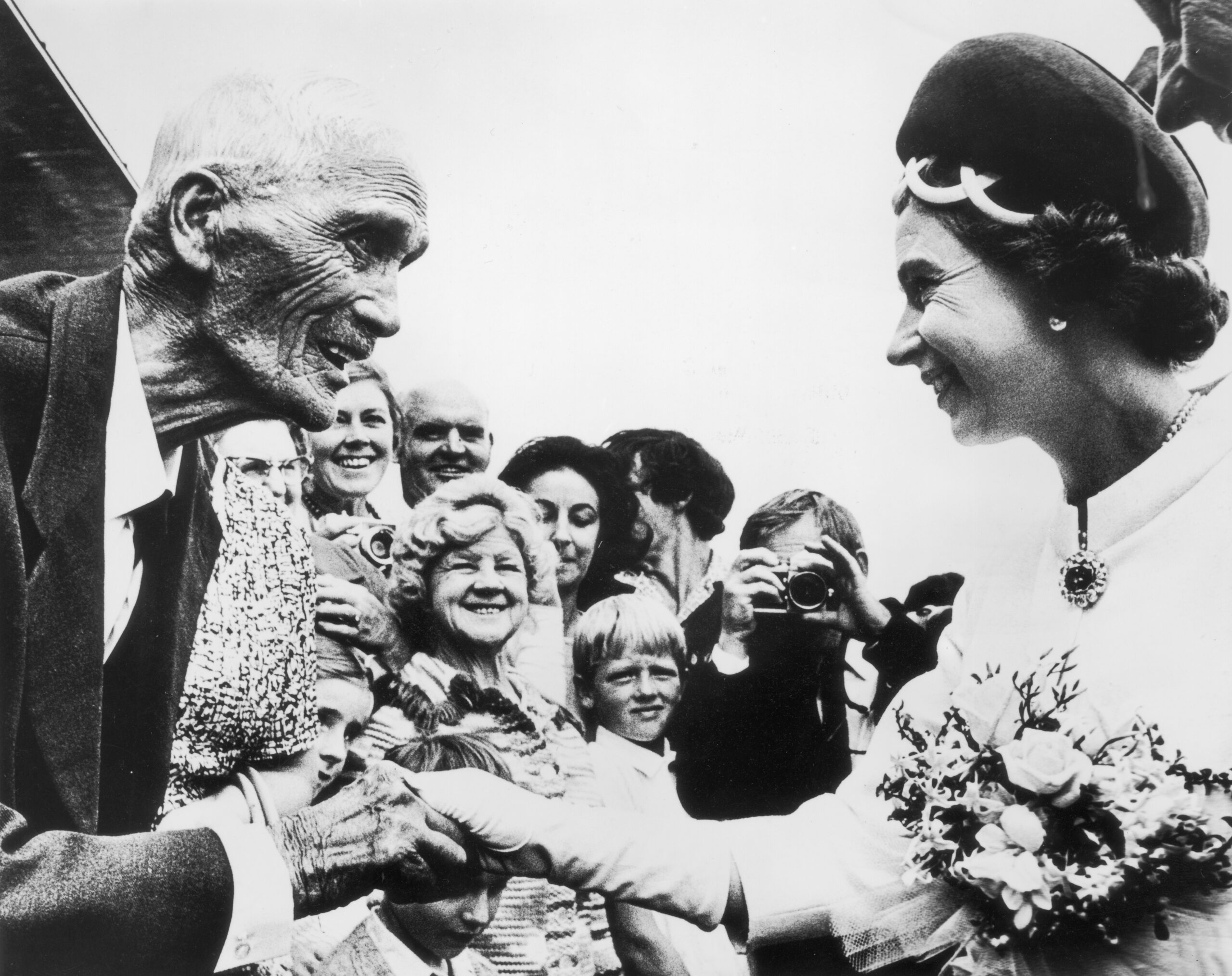
In 1970, during a visit to Te Rapa racecourse in Hamilton, the Queen met Hori Paki, who at 104 was believed to be New Zealand’s then oldest man.
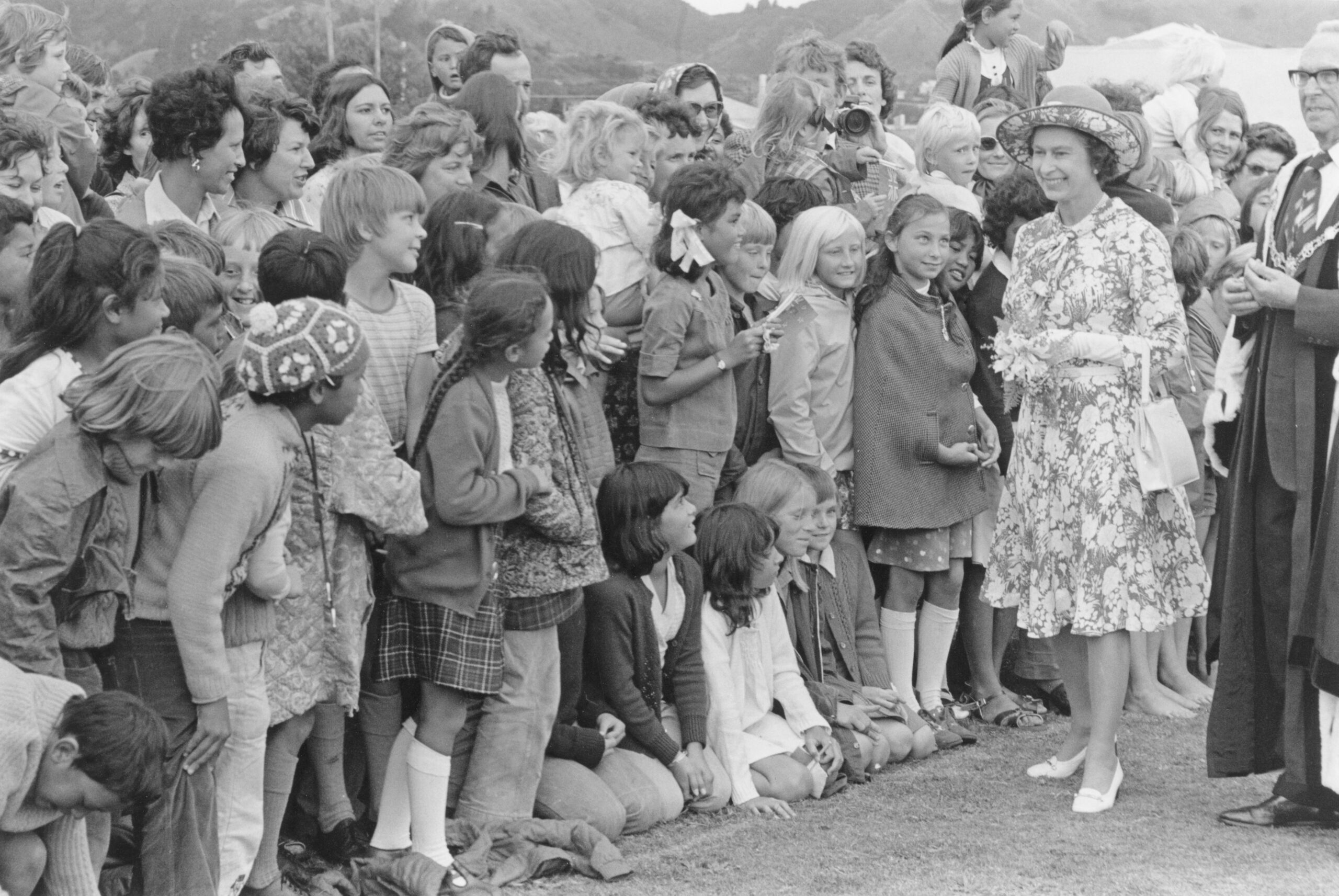
Large crowds gathered to see Queen Elizabeth II as she goes for a ‘walk-about’ in Auckland during a visit to New Zealand in 1977. Part of her Commonwealth tour to mark her Silver Jubilee (25 years on the throne), the Queen and Prince Philip visited 11 places in the country, including Wellington where the monarch opened the Beehive building.
2000s
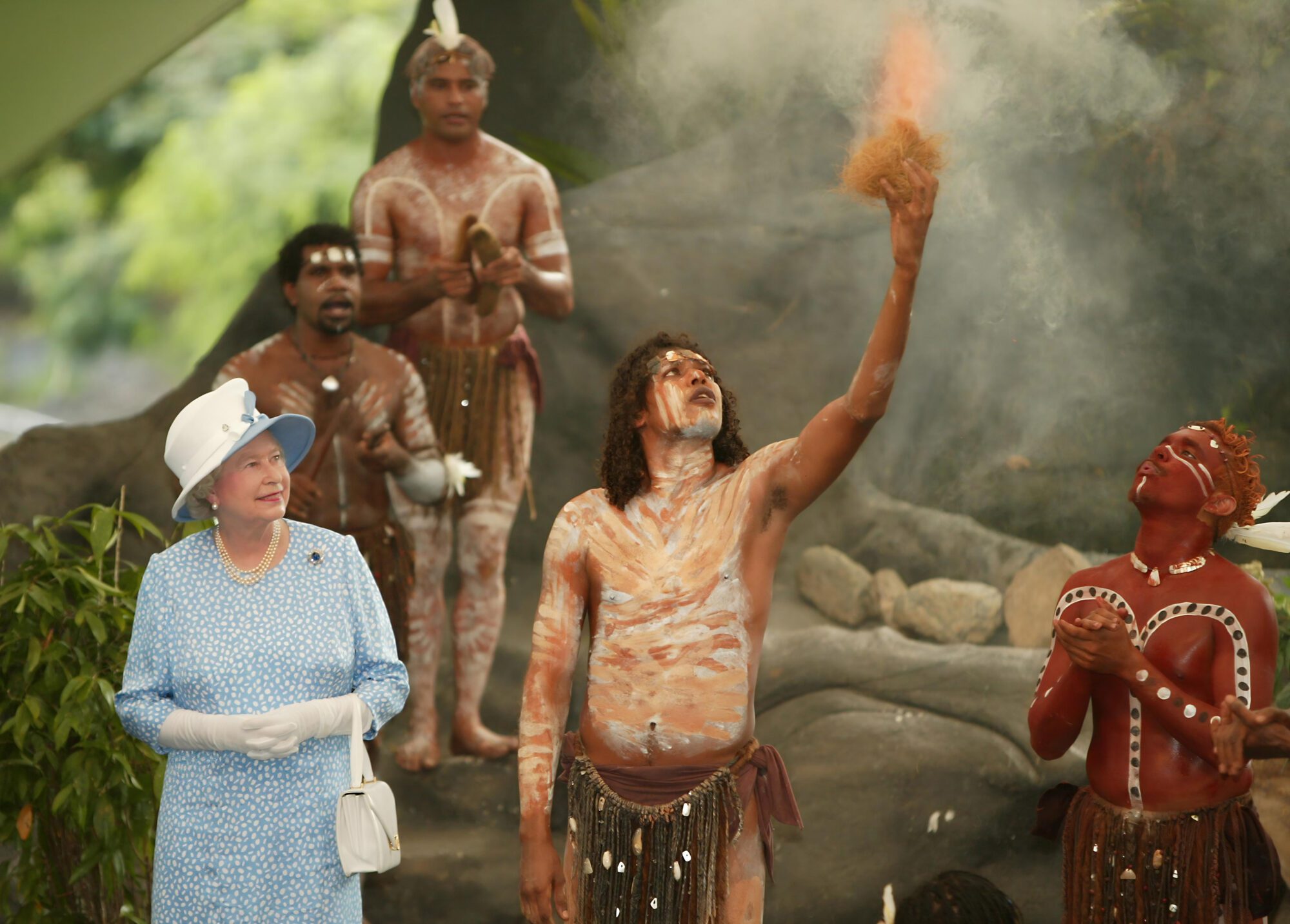
Queen Elizabeth II has made 16 visits to Australia during her 70 years as reigning monarch, with the most recent in 2011. In 2002, to mark the 50th anniversary of her accession to the throne, the Queen undertook a special Golden Jubilee Tour visiting four Commonwealth countries – Jamaica, New Zealand, Australia and Canada. She is pictured here in 2002 watching Tjapukai Aborigines light a ceremonial fire during a cultural performance near Cairns. The 2002 tour was the sixth time in her reign that she travelled around the world on a single tour.
She visited 50 countries over 38 days in the Jubilee year, travelling over 64,000km by air. Prime Minister Scott Morrison has announced Australia will host a range of national and community events in 2022 to honour Queen Elizabeth II’s Platinum Jubilee, which marks 70 years of dedicated service to Australia and the Commonwealth. “Seventy years of service is a truly immense achievement, and we are proud to join with other Commonwealth nations to celebrate this milestone,” said Morrison. “Her Majesty has always held a deep affection and close connection with the people of Australia.” The celebrations will include the lighting of the Queen’s Platinum Jubilee Beacon in Canberra, the release of commemorative stamps and coins, as well as illuminating monuments around Australia. Aspen Island in Canberra’s Lake Burley Griffin will also be renamed Queen Elizabeth II Island.


